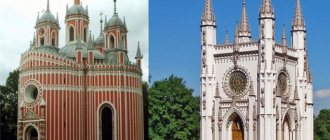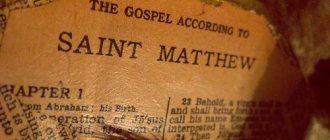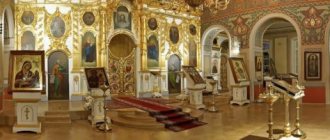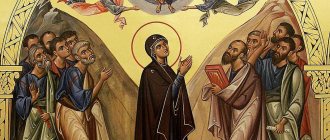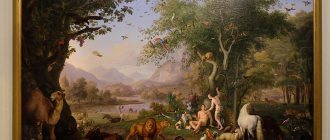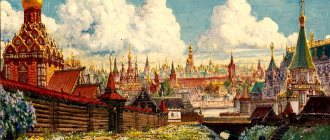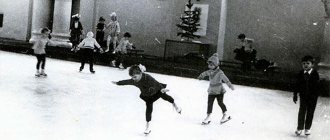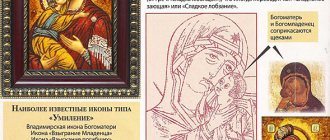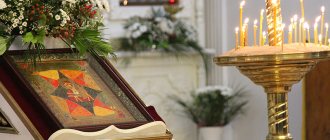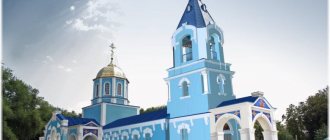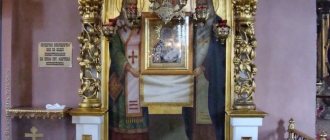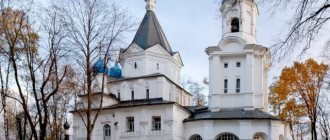New Cathedral
Back in 1849, after the residence of the head of the Catholic Church was moved from Mogilev, the clergy raised the question of erecting a church in St. Petersburg that would receive cathedral status. The highest permission for construction was received in May 1870.
Construction work was carried out for three years, from 1870 to 1873. Initially, the author of the construction project was the famous architect Vasily Ivanovich Sobolshchikov. However, his premature death did not allow him to complete the construction work. The construction of the cathedral was completed by his deputy, architect Evgraf Sergeevich Vorotilov. The ceremony of the solemn consecration of the temple in the name of the Dormition of the Blessed Virgin Mary took place on April 12, 1873.
Initially, the temple had the shape of a cross in plan. It contained apartments for employees and singers, rooms for assistants, an office, a dining room, and an apartment for the metropolitan.
Catholic Church in Crimea
The first Catholic church in Kerch was erected in 1831 - 1840, from the remnant of a stone burial mound of the Scythians, located not far from the city and dating back to the second half of the 4th century. BC e. The shrine named after the Assumption of the Blessed Virgin Mary was consecrated by the chaplain of the Black Sea Fleet, Fr. Ferdinand Kapersky in 1840. The shrine arose for the Kerch parish community, the basis of which were Italian sailors and their families. Many of them were descendants of the inhabitants of Genoa, who in the Middle Ages created a strong colony on the southern coast of Crimea. In 1883, presumably on the site of the former shrine, a new temple was erected. Funds for its construction were received from foreign donations - due to the multinational nature of the city - and, most interestingly, from a gift from the Turkish Sultan, who donated some funds for this purpose. The city has never had a separate cemetery for Catholics, due to their small number. Parishioners are still buried to this day in two communal cemeteries, where monuments to this day can be seen, mainly of Italian notables. After the Second World War, local Italians were resettled in Kazakhstan. Some of them have returned to Kerch over the years, but most of them do not visit the temple. Also, at one time, Poles made up a significant group, although not as numerous as the Italians. The records of the Tiraspol diocese for 1913 indicate that the city community numbered 1,230 believers, and was headed by Fr. Yan Arazov. Immediately after the revolution in 1917, the temple and all internal equipment were taken away from local Catholics, and the shrine itself was converted into a cinema, and later into a sports hall. During the refurbishment, the musical choir was dismantled. During its use, the temple was severely destroyed, although its original building was not rebuilt. However, the prolonged lack of repairs significantly weakened the walls of the building, which were severely cracked and threatened to collapse. Also, for a long time, the temple was not immune from penetration by strangers, which further increased its devastation. In 1992, by decision of the Council of Ministers of the Autonomous Republic of Crimea, the temple was returned to the Catholic community. A small area of the territory adjacent to the temple was also given away, but without the former living quarters of the priests, where 4 families now live. In 1993, Fr. arrived in Kerch. prelate Kazimir Tomasik, who became the first priest in the city since pre-revolutionary times. In the same year, Fr. Tomasik appealed to the Latin Rite Metropolitan of Przemyl Joseph Mihalik, under whose jurisdiction he was the rector of the parish in Olszanice, to relieve him of his position and provide him with the opportunity to leave for Ukraine. In the Kamenets-Podolsk diocese, where the priest went, the then ordinary bishop. Jan Olshansky appointed him rector in Kerch. On July 26, 1993, O. Tomasik received documents from the bishop stating that he is a shepherd in this territory. With them, he turned to the appropriate official in the affairs of confessions and, having received consent to priestly activity, began serving. Thus Fr. Tomasik became the head of the second organized parish in Crimea. The first and only one operated in Yalta until then. Ep. Olshansky arranged cooperation between these two parishes. At first, the Holy Mass in Kerch was celebrated in front of the doors of the temple, since it was still unsuitable for these purposes. They moved inside after repairs and the installation of bars and metal doors protecting the temple from invasion of the shrine by vandals. The renovation of the temple was supported by Bishop Jan Olshansky. He sent a repair team of four people to Kerch, responsible for repairing the roof, which was received and supported by local parishioners. After her, two masons and plasterers arrived from Kamenets-Podolsky, who strengthened the walls and plastered the temple. Some parishioners actively participated in the work. As a result of the repair work, the ceiling was repaired, the roof was sewn, the walls were insured against collapse and the structure of the building was strengthened. Also, under the guidance of local specialists, the decorations of the columns supporting the portico of the shrine were restored. Today, the temple contains the following icons: The Assumption of the Blessed Virgin Mary and the Merciful Christ, painted in the same period by the Kerch artist Nikolai Kovalev. The present interior decoration of the interior of the temple, in particular the panel, was carried out on behalf of Fr. Thomasik, from materials partially brought from Kamenets-Podolsk. After arriving in Kerch, Fr. Prelate Kazimir Tomasik settled with a Catholic family, who offered him one room in their house. Over time, the priest rented his own apartment, where he still lives. Now pastoral work in Kerch is complicated by the position of the city, which is located 50 km away. Catholics are scattered throughout the city and many of them have to travel a considerable distance. This negatively affects attendance at religious services. Now, Sunday St. About 40 parishioners attend Mass; on holidays there are more, up to 100 people. On weekdays, worship is held once a day, usually with the participation of several people. All St. Masses are celebrated in Russian, only sometimes, when Poles—usually tourists—participate in the Eucharist, they are held in Polish. There are about 350 people in the city who know of their Polish origin, although most of them consider themselves non-believers or do not participate in Catholic life.
Based on materials from https://uspenie.co.nf
<<Back<
Reconstructions of the cathedral
The first reconstruction of the temple began already in 1878 - 1879. Vorotilov proposed expanding the building and rebuilding the entrance to the church, making it more formal. But it was decided to limit ourselves to only rebuilding the roof and erecting several buildings in the yard.
Meanwhile, the number of parishioners grew rapidly, and by the end of the 90s the temple could no longer accommodate everyone. According to the 1892 project, two side chapels were added to the building, a new altar was installed, the floor was replaced with a mosaic one, and the wooden altars were replaced with marble ones. At the same time, heating stoves were placed in the basement, and work was carried out to install ventilation. During the period from 1895 to 1898, painting work was carried out in the temple, the wooden ceiling that had become unusable was replaced, electricity and gas were supplied.
The cathedral was re-consecrated in December 1897.
The next time the reconstruction and expansion of the temple took place in 1900-1901, followed by consecration in September 1902.
Cathedral of the Assumption of the Blessed Virgin Mary
* Catholic Cathedral of the Assumption of the Virgin Mary on the territory of the Polish Garden behind the building of the former Mogilev Roman Catholic
Theological College at 1st Krasnoarmeisaya Street, 11-A. 03/31/1991. Photo by K.V. Ovchinnikov
Permission to build a Catholic church was given on May 27, 1870.
For religious and ideological reasons, it was decided to place the temple building in the depths of the block, covering it with the Consistory building. The temple was built by architect V.I. Sobolshchikov.
Initially, the church had the shape of a Latin cross. The temple had a single nave, covered with a wooden tent with paintings, five high windows on each side and two windows in the altar. The space between the windows was occupied by double Romanesque columns. On the eastern side the nave was adjacent to the sacristy, and on the western side there was a chapel.
The basement floor of the church was supposed to house apartments for singers and clerical officials.
On April 12, 1873, the building of the new church was solemnly consecrated. The main altar (with a particle of the relics of the holy martyr Pope Pius I and St. Boniface) was consecrated in the name of the Dormition of the Blessed Virgin Mary by Metropolitan Anthony Fialkovsky.
In the fall, the design of two side exits to the church yard for ceremonial processions began . The work was supposed to begin in September 1873. The architect V.I. Sobolshchikov had died by that time, and his assistant E.S. Vorotilov was appointed the main contractor.
In the spring of 1873, finishing work in the church was completed, in the summer of the same year the chapter archive arrived from Mogilev, and the apartments of the prelates and canons were distributed.
The position of building architect was successively occupied by: E. S. Vorotilov (1878-1883), Orachevsky (1884-1885), A. D. Fialkovsky (1885-1897), L. P. Shishko.
The temple was later rebuilt several times.
In 1878 - 1879 the architect Vorotilov rebuilt the roof of the temple, in addition, several buildings were made in the courtyard of the house of the Roman Catholic Theological College.
In 1895 - 1898 according to the design of A.D. Fialkovsky, two side chapels appeared, parquet was replaced with mosaic floors, a new altar was installed in the right aisle, wooden altars to the right and left of the main altar were replaced with marble ones with bronze statues, the passages of the church portals were expanded. In the basement, in the new sacristy, which was built at the same time on the garden side, and in the storeroom, Dutch tiled stoves were installed, the necessary work was done on ventilation and heating, the rotted wooden ceiling was replaced with a concrete vault according to the Monier system, and the Chapel of the Blessed Sacrament was built. Interior painting works in 1897-1898. performed by M. Khrushkov, decorative painting in the “Romanesque style” by N. A. Alexandrov. The new consecration of the temple took place on December 23, 1897 by Metropolitan Karl Niedzialkowski.
The church was once again expanded in 1900 - 1901. architect E. S. Vorotilov and again consecrated on September 14, 1902 by Metropolitan Boleslav Klopotovsky.
In 1905 - 1906 The Religious College commissions the repair of the vault to be carried out by the architect Stanislav Volovsky and civil engineer A.K. Montague. In addition, an additional entrance to the basement on the right was built and some internal work was carried out.
The last repairs before the church's closure were carried out in 1928.
The temple was closed in 1930. After the Great Patriotic War, the church building, damaged by bombs, was converted to the needs of the design bureau.
In 1994, the parish of the Assumption of the Blessed Virgin Mary was re-registered. In September 1995, the temple building was returned to the Church and restoration began. On February 16, 1997, services resumed. On May 24, 1998, Archbishop Tadeusz Kondrusiewicz consecrated the Cathedral of the Assumption of the Blessed Virgin Mary.
(based on materials from the official website of the temple)
Category: History of the temple
Many Moscow churches that survived during Soviet times have now been returned to the Russian Orthodox Church, and in the period 1991-1992. most of them were filled with believers. Regular services have resumed. One of these churches is the Church of the Assumption of the Blessed Virgin Mary on Uspensky Vrazhek.
Uspensky Vrazhek is an ancient Moscow tract between Tverskaya and Nikitskaya streets, mentioned in chronicles from the 16th century. Here were the courts of the ambassadors - the Lithuanian court and the “court of the Tsar's ambassadors”, i.e. Roman Empire. The courtyard of Aleviz the New, a famous architect, is also mentioned here.
1601 - the first written mention of the temple.
1629 - the wooden Church of the Assumption burned down in a big fire.
1634 - rebuilt.
1647 - the first stone church was built at the expense of G.I. Gorikhvostov
1707 - wooden chapel of St. Nicholas the Wonderworker in the churchyard.
The history of the temple is closely connected with the owners of the neighboring estate, the Yankovs, who took care of the welfare of the church.
1735 - D.I. Yankov added the side church of St. Nicholas the Wonderworker to the building of the Church of the Assumption itself. The temple became the tomb of the Yankovs.
1781 - St. Nicholas side church was rebuilt due to its dilapidation.
1812 - the church burned down...
The Assumption Church was a summer church; in winter they served in the warm chapel church of St. Nicholas the Wonderworker.
In the mid-50s, the Moscow merchant S. A. Zhivago, who had previously bought the Yankov estate for himself, was elected head of the temple. Commissioned by Zhivago, academician of architecture A.S. Nikitin drew up a design for a vast three-altar church with a bell tower adjacent to the St. Nicholas Church.
On May 30, 1857, the design of the Church of the Assumption on Vrazhka was approved by the highest order.
1860 - construction of the current church building was completed. The new church has three altars: the Dormition of the Blessed Virgin Mary, the Beheading of John the Baptist and Sergius of Radonezh, the heavenly patron of the temple builder.
On September 20, 1860, the temple was consecrated by Metropolitan of Moscow Philaret (Drozdov).
Finishing work continued until the 1890s. Only in 1870, at the expense of the elder Joseph Zhivago (brother of S.A. Zhivago), the temple was plastered and painted, the domes were gilded.
1910 - the 50th anniversary of the temple was solemnly celebrated.
1920 - an agreement was concluded between the parish and the Moscow Council of Workers and Red Army Men on the transfer of “religious buildings” for indefinite and free use.
1924 - by resolution of the Presidium of the Moscow Soviet, the agreement with the community was terminated. The temple was transferred to the State Historical Archive of Moscow. areas. In Soviet times, the heads of the temple and bell tower, the sculptural decoration of the temple, decor, not to mention the interior decoration and church property were lost. The side-chapel St. Nicholas Church was dismantled during the construction of the House of Composers.
1979 - a long-distance telephone center was opened in the church.
1992 - Moscow Government decree on the return of the church to the Russian Orthodox Church.
1996 - the basement was given to the community for use. At the same time, on the Resurrection of Fomino, the first Divine Liturgy was celebrated in the returned church.
In memory of the lost side church, the throne is dedicated to St. Nicholas the Wonderworker.
1998 - the upper church of the Assumption of the Blessed Virgin Mary was returned.
1999 - on the Feast of the Giving of the Dormition of the Blessed Virgin Mary, the throne was consecrated in the name of the Dormition of the Blessed Virgin Mary.
Orthodox Life
The Holy City of Jerusalem is separated from the Mount of Olives by the Kidron or Jehoshaphat Valley. At the foot of the Mount of Olives is the Garden of Gethsemane, whose olive trees still bear fruit.
Dormition of the Mother of God, Stearine plate. X century Vienna, Museum of Historical Arts
Saint Joachim, the father of the Most Holy Theotokos, reposed as an 80-year-old man several years after the Entry of the Most Holy Virgin into the Temple. His wife, Saint Anna, remaining a widow, moved from Nazareth to Jerusalem and lived near the temple. In Jerusalem, she acquired two estates: the first at the Gates of Gethsemane, and the second in the Valley of Jehoshaphat. In the second estate, she built a crypt for deceased family members, where she was buried along with Joachim. There, in the Garden of Gethsemane, the Savior often prayed with His disciples.
The most pure body of the Mother of God was buried in the family cemetery. The circumstances of the Dormition of the Mother of God have been known in the Orthodox Church since apostolic times.
At the time of Her blessed Assumption, the Blessed Virgin Mary arrived in Jerusalem, She spent days and nights in prayer. Often the Most Holy Theotokos came to the Holy Sepulcher, burned incense here and knelt down. On one of these visits, Archangel Gabriel appeared before Her and announced Her imminent transfer from this life to the heavenly, eternally blissful life. As a pledge, the Archangel gave Her a palm branch. The Mother of God returned to Bethlehem with heavenly news. Then She called righteous Joseph from Arimathea and the disciples of the Lord, to whom She announced Her imminent Dormition.
Church of the Assumption of the Mother of God. Building's facade
The Blessed Virgin also prayed that the Lord would send the Apostle John to Her. And the Holy Spirit transferred him from Ephesus, placing him next to the place where the Mother of God was reclining. After the prayer, the Blessed Virgin burned incense, and John heard a voice from Heaven, ending Her prayer with the word “Amen.” The Mother of God noticed that this voice meant the imminent arrival of the apostles and the Holy Powers of the Ethereal. The apostles, whose number cannot even be counted, flocked, as St. John of Damascus says, like clouds and eagles, to serve the Mother of God.
The Holy Spirit gathered them all so that they would be worthy of the blessing of the Most Pure Virgin Mary and arrange the burial of the Mother of the Lord more beautifully. She called each of them to Her by name, blessed and praised their faith and their labors in preaching the Gospel of Christ, wished eternal bliss to each and prayed with them for the well-being of the whole world.
Entrance to the center Dormition of the Most Holy Mother of God. Lithograph by artists G. and N. Chernetsov. 1842–1843
The third hour came when the Dormition of the Mother of God was to take place. Many candles were burning. The holy apostles chanting surrounded the splendidly decorated bed on which the Most Pure Virgin Mary reclined. She prayed in anticipation of Her departure and the coming of Her Son and Lord.
Suddenly the indescribable Light of Divine glory shone, before which the burning candles faded. Those who saw it were horrified. The vaults of the room seemed to disappear in the rays of immense light, and the King of Glory Himself, Christ, descended, surrounded by many Angels, Archangels and other Heavenly Powers with the righteous souls of the forefathers and prophets.
Tomb. Stone bed on which the body of the Mother of God rested for three days
Seeing Her Son, the Mother of God exclaimed: “My soul magnifies the Lord, and My spirit rejoices in God, My Savior, that He has looked upon the humility of His Servant” - and, rising from the bed to meet the Lord, she bowed to Him. The Lord invited Her to the abodes of eternal life. Without any bodily suffering, as if in a pleasant dream, the Most Holy Virgin gave up her soul into the hands of Her Son and God.
Then the joyful angelic singing began. The heavenly gates rose, meeting the soul of the Most Holy Theotokos, and the Cherubim and Seraphim joyfully glorified Her. The gracious face of the Mother of God shone with the glory of Divine virginity, and a fragrance emanated from her body.
Having mourned their separation from the Mother of God on earth, the apostles began to bury Her most pure body. The holy apostles Peter, Paul, James and others from among the 12 apostles carried on their shoulders the bed on which the body of the Ever-Virgin lay. Saint John the Theologian walked ahead with a heavenly luminous branch, and other saints and many faithful accompanied the bed with candles and censers, singing sacred songs. This solemn procession began from Zion through all of Jerusalem to Gethsemane.
Chapel of Joachim and Anna
At its first movement, a vast and luminous cloud circle, like a crown, suddenly appeared over the most pure body of the Mother of God and all those who accompanied Her, and the face of the Angels joined the face of the apostles. The singing of the Heavenly Powers was heard, glorifying the Mother of God, which echoed the earthly voices.
The unbelieving inhabitants of Jerusalem, amazed by the extraordinary grandeur of the funeral procession and embittered by the honors given to the Mother of Jesus, reported this to the high priests and scribes. Burning with envy and vengeance towards everything that reminded them of Christ, they sent their servants to disperse those accompanying them and burn the very body of the Mother of God. The excited people and soldiers furiously rushed towards the Christians, but the cloudy crown that accompanied the procession through the air sank to the ground and protected it. The pursuers heard footsteps and singing, but did not see any of the mourners. The Jewish priest Athonia, out of envy and hatred of the Mother of Jesus of Nazareth, wanted to overturn the bed on which the body of the Blessed Virgin lay, but the Angel of God invisibly cut off his hands that touched the coffin.
Dormition of the Mother of God. Fresco 1294-1295 Ohrid, Church of Our Lady Periveleptos
Seeing such a miracle, Affonia repented and with faith confessed the greatness of the Mother of God. He received healing and joined the host of those accompanying the body of the Mother of God, becoming a zealous follower of Christ.
When the procession reached Gethsemane, there the last kissing of the most pure body began with crying and sobbing. Only in the evening could the holy apostles put him in a coffin and close the entrance to the cave with a large stone. For three days they did not leave the burial place, performing incessant prayers and psalmody. According to the wise provision of God, Apostle Thomas was not destined to be present at the burial of the Mother of the Lord. Arriving on the third day in Gethsemane, he threw himself down with bitter tears in front of the tomb cave and loudly expressed regret that he was not worthy of the last blessing of the Mother of God and farewell to Her. The apostles decided to open the cave and give him consolation - to venerate the holy remains of the Ever-Virgin. But, having opened the coffin, they found in it only Her burial shrouds and were thus convinced of the wondrous ascension of the Blessed Virgin to Heaven.
In the evening of the same day, when the apostles gathered in the house to strengthen themselves with food, the Mother of God Herself appeared to them and said: “Rejoice! I am with you all the days." This delighted the apostles and they exclaimed: “Most Holy Theotokos, help us.”
Church of the Assumption of the Virgin Mary, stairs from the entrance leading to the tomb (modern photo)
From the very burial of the Most Holy Theotokos, Christians reverently honored the tomb of the Mother of God and built a temple in that place. Precious shrouds were kept in the temple, with which the most pure and fragrant body was covered.
There is evidence that at the end of the 7th century. above the underground church of the Assumption of the Blessed Virgin Mary there was an upper church, from the high bell tower of which the dome of the Church of the Resurrection of the Lord was visible. Now there is no trace of this church. In the 9th century. A monastery was built near the underground Temple of Gethsemane, in which more than 30 monks labored.
The temple suffered great destruction in 1009 from the persecutor of holy places, Hakim. Significant changes, traces of which remain to this day, were made by the Crusaders in 1130.
But, despite the destruction and changes, the general original cruciform plan of the temple was preserved. At the entrance to the temple, four marble columns flank the iron doors. To enter the temple, you need to go down a staircase of 48 steps. At the level of the 23rd step, on the right side, there is a chapel in honor of the holy fathers Joachim and Anna with their tomb, and opposite, on the left side, there is the chapel of the righteous Joseph the Betrothed with his tomb. The right side chapel belongs to the Orthodox Church, and the left side to the Armenian-Gregorian Church.
You need to go down 46 steps to get to the tomb of the Virgin Mary
The Church of the Dormition of the Mother of God has the following dimensions: length 34 m, width 5.5 m. There are two small entrances to the tomb of the Mother of God: they enter through the western doors and exit through the northern ones. The tomb of the Most Pure One is covered with precious curtains. The funeral bed of the Mother of God is carved from stone in the image of ancient Jewish tombs and is very similar to the Holy Sepulcher. Behind the tomb is the altar of the temple, in which the Divine Liturgy is celebrated daily in Greek.
Based on site materials
Sisterhood
Community of sisters of mercy in the name of the icon of the Mother of God “Hodegetria” of diaconal orientation at the Church of the Dormition of the Blessed Virgin Mary in Matveevskoe.
Where it all began.
From the very beginning of liturgical life, social work was carried out in our church. Volunteers from among the parishioners and workers of the church worked in pre-trial detention center No. 5 of the Federal Penitentiary Service in Moscow and pre-trial detention center No. 2 of Russia (Lefortovo), where the rector of our church, Archpriest John Churakov, serves as a senior priest. Trips were organized to visit imprisoned teenagers in the Mozhaisk educational colony. Help was provided to parishioners in need - large families, single pensioners and parishioners who found themselves in difficult life situations. The first social worker of the temple was Elena Vladimirovna Isupova, who actively participated directly in parish and prison social obediences. In the spring, from Easter 2017, with the blessing of the dean of the Mikhailovsky District, Archpriest Georgy Studenov, our church is entrusted with caring for the elderly and disabled living in the Boarding House for Labor Veterans No. 29 located next to the church at the address: st. Nezhinskaya 2. April 19, 2021 on Wednesday of Bright Week in the St. Nicholas Church of the HTP No. 29 prot. The first Divine Liturgy from our parish was celebrated by John Churakov. The social worker of the church studied the experience of patronage Orthodox service by clergy and laity of the Church of the Archangel Michael in Troparevo, who cared for this institution for 22 years.
With the blessing of the person responsible for social service in the Western Vicariate, Archpriest Seraphim Nedosekin, in the spring of that year, contacts were established for cooperation with the branch of the Skolkovsky Center for Social Welfare (12 Nezhinskaya St.), which is also located in our microdistrict. Subsequently, cooperation agreements were concluded with both social institutions on behalf of the Parish. In addition, for older people in the area, conversations and joint concerts are held with the local music school in the premises of the Ochakovo-Matveevskoye shopping center.
Of course, the basis of any church service, or in Greek - “deakoni”, is worship, joint prayer. Volunteers who, in one way or another, participated in the social work of the parish began to be called upon by the rector to jointly participate in liturgical life and share communion. On Thursdays, the liturgy began to be served, with petitions taken from the breviary for the increase of love, the sisters of the mercy group, if possible, received communion and confessed at these liturgies, and on Fridays, during the evening service, there was joint singing of the akathist and conversations about the foundations of Christian life.
On December 24, 2021, a written blessing for serving the mercy group at the Parish of the Dormition of the Blessed Virgin Mary in Matveevsky was given by the managing vicar, His Grace Tikhon, Bishop of Yegoryevsk (now Metropolitan of Pskov). More and more volunteers from among the parishioners began to be attracted to the service, wanting to devote their free time to serving God and their neighbors.
With the blessing of His Holiness Patriarch Kirill, the parish group of mercy was transformed into a community of sisters of mercy in the name of the Hodegetria icon of the Mother of God. On May 11, 2021, after the All-Night Vigil on the eve of the 3rd Sunday after Easter, the feast of the Holy Myrrh-Bearing Women, Archbishop Matthew of Yegoryev, vicar of His Holiness the Patriarch of Moscow and All Rus', administrator of the Western and North-Eastern vicariates of the city of Moscow, performed the rite of dedication of the first 12 sisters.
On February 28, 2021, on the Sunday of the Prodigal Son, after the Divine Liturgy, His Eminence Panteleimon, Bishop of Orekhovo-Zuevsky, Vicar of the Most Holy Patriarch of Moscow and All Rus', performed the rite of dedication of 4 more sisters.
Service.
Hospital ministry.
–GBU HTP No. 29 of Moscow Department of Labor and Social Protection of the Population of Moscow - Nezhinskaya St., 2
Every week on Fridays, sisters of mercy visit the boarding house for labor veterans No. 29. On this day, the clergy of our church perform divine services in the house church of St. Nicholas the Wonderworker, located on the 5th floor of the boarding house. The sisters participate in singing and reading during the service. Each of the 5 floors of the “mercy” department of the boarding house is assigned to certain sisters who prepare residents for confession and communion. They help elderly people and people with disabilities in wheelchairs get to the temple for worship. Those who cannot move for health reasons are prepared by the sisters for confession and communion in their rooms. During the days of Great Lent, the sacrament of the Blessing of Unction is celebrated. The sisters help everyone on their floors set up an online television broadcast of the service in their rooms. Holy water, Orthodox literature, calendars, and crosses are poured and distributed. They fulfill other one-time requests, hand out small souvenirs and sweets. Those who, despite their age, have not yet been enlightened by Holy Baptism, prepare for the Sacrament, helping to enter the bosom of the Church, its sacred life.
Finally, they simply talk with older people, even with those who are not yet ready to visit the temple, but for whom simple human attention, warmth and participation are so important and necessary. At the request and necessity, the sisters visit their charges on other days of the week when there are no services in the church. From 2021 on Sundays, sister Lyudmila Konstantinovna Nenasheva, who is responsible for the house St. Nicholas Church, comes to the St. Nicholas Church of the boarding house to read an akathist to the Sweetest Jesus, so that both employees and residents can come to the church on Sunday, light candles, write notes, and pray.
- State Public Institution CSSV "Skolkovsky" Department of Labor and Social Protection of the Population of Moscow, structural unit on the street. Nezhinskoy 12
The center's pupils are children with organic damage to the central nervous system and mental disorders. Church clergy regularly come to the children's institution to give communion to children and sisters of mercy help them in performing this sacrament. To receive communion, they have to go around all groups and floors, because many children cannot move independently. . In all groups, red corners with icons were created. The sisters help the priest in the sacrament of Baptism of infants who were not baptized by their parents in a timely manner. They come to the blessing of the premises on the feast of Epiphany. Baby food brought by parishioners is regularly collected, which is then delivered to the children. If necessary, hygiene products, diapers, toys, household appliances, blenders, hair dryers, etc. are collected. Assistance is provided for cleaning groups after repairs. On holidays, together with the parish youth group, our volunteers come to children with concerts. During their visits, the sisters also try to answer questions about Christian life that the staff of this institution ask them.
Prison ministry.
-Pre-trial detention center No. 5 of the Federal Penitentiary Service for Moscow and Pre-trial Detention Center No. 2 of Russia (Lefortovo), FKU Mozhaisk VK of the Federal Penitentiary Service of Russia for the Moscow Region.
Volunteers and sisters of mercy work as church attendants in pre-trial detention center No. 5 and pre-trial detention center No. 2. They advise prisoners on matters of church life when visiting church, accompany prison priests and participate in services as a reader when performing religious services. They conduct conversations with those serving sentences in the economic units of these institutions. The sisterhood takes part in the annual collection of gifts for prisoners for Christmas, Easter and the winter holiday of St. Nicholas the Wonderworker. The sisters travel with the rector of the church to the Mozhaisk correctional colony, where children who served time under investigation in Moscow pre-trial detention center No. 5 are serving their sentences, bringing gifts for the children, holding concerts, talking, and participating in joint worship. The main obedience of one of the volunteers of the community of nurses is the care of the teenagers of this institution.
- present
- in a close circle
Parish ministry.
Our parishioners are not left unattended either. Community assistants and sisters provide assistance to large families of the parish in caring for children and fulfill one-time requests of elderly and lonely people. On major holidays, they take part in cleaning the temple, distributing leaflets, water, collecting donations, and are on duty around the temple and in the church shop. They monitor the organization of order and help the catechist of the temple in missionary work.
Our life.
Divine services.
The spiritual father of the sisterhood is the rector of the church, Archpriest John Churakov. Every week on Thursdays, the Divine Liturgy is served in our church with petitions for the increase of love and the unity of the parish. On this day, the sisters gather for joint worship and begin the sacraments of confession and communion. They participate in divine services as readers and singers, and are on duty in the temple. Then everyone has a common meal, after which pressing problems and plans are discussed. On Mondays, Wednesdays and Fridays, the sisters read Compline in the church - one of the services of the daily circle. On Fridays, the community of sisters of mercy takes part in the evening service and reading of the akathist, after which the rector, Archpriest John Churakov, conducts a conversation with the sisters of mercy and with all parishioners, analyzing, in the light of patristic interpretation, the inspired book - the Psalter. Almost all the community sisters and assistants read the psalter daily in the parish twenty.
Education.
In order to carry out their service at the required quality level, the sisters undergo specialized training. In 2018, one of the sisters, Tatyana Krivova, completed the “Assistant Hospital Priest” course organized by the Commission on Hospital Ministry under the Diocesan Council of Moscow. Another sister has theological courses “Fundamentals of Orthodox Theology and Culture” and “Liturgical Charter and Hymnography” at the Faculty of Additional Education of PSTGU. Some of the sisters are studying at the courses of the icon painting and gold embroidery school of the Spiritual Educational School, which operates at our church.
Obedience and rest.
Most of the sisters of mercy work in our parish, also serving in the refectory, church shop, Sunday school, editorial office of the parish website, and family club. The sisters go together on pilgrimage trips, to holiday concerts, and participate in key liturgical, social and other events held by the Moscow Diocese and the Western Vicariate. They celebrate name days and birthdays together. They try to support and help each other in difficult situations.
How to join the sisterhood and how to become a volunteer for the parish charity project.
We are waiting for you in our community of sisters of mercy and are ready to tell you in more detail about our obediences and joint projects.
There are currently 12 consecrated sisters and about 14 assistant sisters in the sisterhood. First, future sisters apply to join the community and serve as assistants. Then, if the sister feels ready to take vows of sisterhood, with the blessing of the rector, Archpriest John Churakov, she undergoes the rite of initiation. Female and male persons can become assistants to the sisterhood. Only women at least 18 years old can join the community.
In April 2021, with the blessing of Bishop Panteleimon of Orekhovo-Zuevsky, Chairman of the Synodal Department for Church Charity and Social Service, and with the assistance of the Moscow Orthodox Service “Mercy,” we also opened a parish volunteer service project. We really need like-minded people, helpers and volunteers. Every person, regardless of age, specialty and physical capabilities, can take part in the work of mercy within their means. You can join the project by filling out the “Volunteer” form.
If you want to join the works of Christian charity and active service to God, contact the elder sister of the community, Elena Moskalenko, by phone. 8-905-525-34-41 . To be assigned to obedience, assistants and volunteers have a conversation with the spiritual father of the sisterhood - the rector of the church, Archpriest Ioann Churakov.
Let us remember: by helping others, we help ourselves, we learn to love God and our neighbors.
